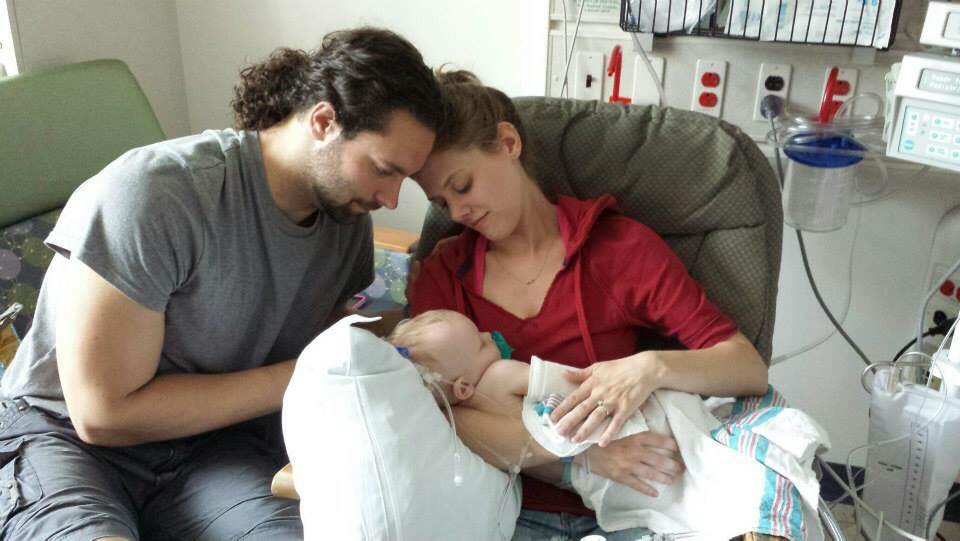by Brittany Fenstermaker (Guest Author)
November has become a very important month for our family in recent years. Not only is the world full of brilliant reds, oranges, and yellows, but the end of the month marks the beginning of the Holiday season! Besides all of these wonderful things about November, it is also Diabetes Awareness Month! Our daughter Norah was diagnosed with Type One Diabetes (T1D) about 4 ½ years ago when she was just 9 months old. We learned fairly quickly that T1D is a complicated and often misunderstood disease. Since her diagnosis, we have made it part of our mission in life to educate and bring awareness to this chronic illness that affects thousands of children and adults worldwide. Today, I want to share 10 things you might not know about Type One Diabetes.
Type One Diabetes is an autoimmune disease. One of the most common misconceptions about T1D is that it is brought on by lifestyle or diet. Type One Diabetes is a chronic illness with a sudden onset that occurs when the body mistakenly attacks the beta cells in the pancreas. Beta cells are responsible for making insulin. Insulin is a hormone that everyone needs to survive. It is responsible for helping transport the energy from food to the body’s cells. Insulin is like a key that opens the door for insulin to enter the cells. Without that key, sugar from the foods we eat build up in the blood resulting in hyperglycemia or high blood sugar. While some forms of diabetes often rely on diet to control blood sugar, those with Type One Diabetes will always require insulin since their bodies no longer makes the hormone. They take a synthetic version either through syringe injections or a pump that has a needle constantly under the skin.
There is no cure. Many people believe that children can outgrow Type One Diabetes or that diet and lifestyle changes can result in a type of remission. This is simply not the case. Once beta cells are dead, they cannot be resurrected. No beta cells means no insulin. No insulin means no energy from food to the cells and hyperglycemia. Taking insulin is not something that one should feel shame about. Type One Diabetics simply cannot make their own insulin, so they must use a synthetic form.
There is no known cause. Many doctors and researchers have their theories and ideas about what causes Type One Diabetes (and autoimmune diseases in general). Unfortunately, there has yet to be a conclusive answer. Once that answer is discovered, a cure will most certainly be on the horizon! Some theories include vitamin D deficiency, vaccines, certain viruses (strep and hand foot and mouth disease), early introduction of solids, and consumption of cow’s milk.
Anyone can be diagnosed with Type One Diabetes, regardless of race, age, or gender. Diabetes does not discriminate. While certain ethnicities are more prone to certain diseases, anyone of any color and from any country can be diagnosed. In recent years, there has been an influx of adults diagnosed with T1D.
Type One Diabetes used to be called Juvenile Diabetes. Due to the fact that mostly young children were diagnosed with the disease, it was first given this name to differentiate between it and the metabolic version of diabetes, now known as Type 2 Diabetes. After a while, diagnosis in adulthood became more common and many cases of adults diagnosed with T1D today have some connection to a misdiagnosis of Type 2 Diabetes. Another reason for the name change was the misunderstanding that the disease was only for children. This fed the myth that children could grow out of it, when in fact, children with T1D become adults with T1D.
The discovery of insulin in 1921 drastically changed the prognosis for Type One Diabetics. Before synthetic insulin was introduced to the medical community, T1D was a death sentence. Patients often experienced a slow and painful death. The inevitable could be delayed for up to two years with a very strict diet where patients were limited to consumption of small amounts of broth, essentially starving them to death. The disease was originally called “the wasting disease” and written history of it dates back to ancient Egypt. It got this name because inflicted patients essentially “wasted away,” continuing to lose weight until their deaths. To this day, rapid weight loss is a telltale sign of diabetes.
Sugar is not the only thing that affects a Type One Diabetic’s blood sugar. Many people believe that sugar-free options are best for diabetics, but the truth is that grams of carbohydrates are what need to be counted…not grams of sugar! In comparing common sugar-free foods with their “regular” counterparts, they often share very similar carb counts meaning that sugar-free is usually not better! Also, sugar-free versions often contain artificial sweeteners that can cause tummy troubles. Besides carbohydrates, many other things can influence a T1D’s blood glucose level (either higher or lower) at any time. These factors include the weather, growth spurts, influence of other hormones naturally occurring in the body, activity level, type of activity, adrenaline, excitement, hydration, illness, sleep patterns, and more!
Many Type One Diabetics check their blood sugar multiple times a day. In order to maintain a healthy balance of blood sugar levels, Type One Diabetics need to check their sugar by finger prick many times in a 24 hour period. As little as 4 times is recommended, but many check upwards of 8 times a day. During periods of rapidly changing glucose levels, some people can test up to 14 times a day!
Hyperglycemia or elevated blood glucose can be life threatening. Even those who are most diligent about their care can still experience hyperglycemia. Illness can raise sugar levels despite an increase of insulin, resulting in the need for a stay at the hospital. Hyperglycemia can lead to Diabetic Ketoacidosis (DKA), a condition that can result in coma, brain damage, or death if not caught in time or if not treated properly. Due to the rising cost of insulin, many Type One Diabetics are rationing their drugs, resulting in more unnecessary deaths from DKA.
In contrast, Hypoglycemia can also be deadly. The same drug that helps keep Type One Diabetics alive can also take their life if not dosed properly. Too much insulin can result in dangerously low blood glucose levels that if not treated properly can result in brain damage or death. This is why T1D’s carry snacks and fast acting carbs (juice, glucose tablets, fruit snacks, cake icing) with them at all times, so they can treat a “low.” In addition to these supplies, T1D’s carry emergency glucagon at all times. This is an injectable medication that can be used to save their lives if their sugar does not come up or if they are unresponsive due to a low blood glucose level. This drug activates the liver to release it’s stores of glucose to quickly bring sugar levels back up. Usually, urgent professional medical follow-up is required after a glucagon injection.
Type One Diabetes is a disease that requires constant attention 24 hours a day, 7 days a week, 365 days a year. There are no breaks and no vacations. It is much more complex than simply “taking insulin” as dosing varies day to day and hour by hour.
Help spread the word this Diabetes Awareness Month by sharing these facts and correcting the misconceptions! Share this post to save a life! Know the signs and symptoms of Type One Diabetes:
Initial Signs:
- Frequent urination
- Extreme, unquenchable thirst
- Weight loss
- Upset stomach
- Exhaustion
- Moodiness
- Blurry Vision
Progressively More Severe Signs – DO NOT DELAY – GO STRAIGHT TO THE ER if any symptoms are present:
- Nausea
- Vomiting
- Fruity-scented breath
- Rapid, labored breathing
- Confusion
- Loss of consciousness
You can follow Brittany and her family and their adventures on You Tube at Fences And Roads!


